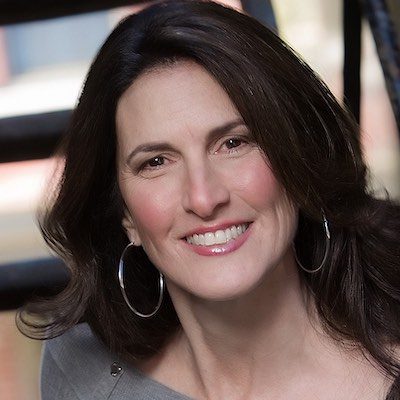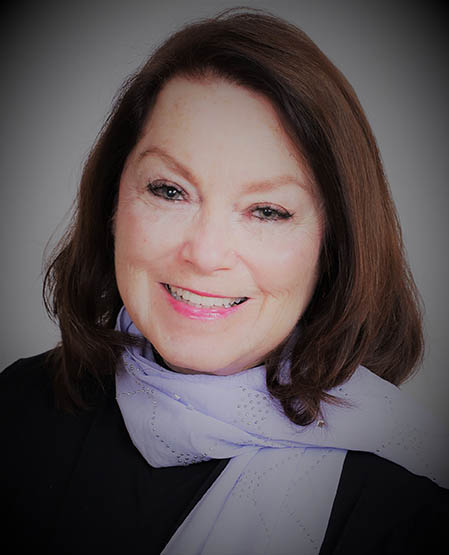On the Horns of a Dilemma
n
The angel on one shoulder, the devil on the other is a common visual device in cartoons: Tom the cat chooses whether to eat Jerry the mouse, Sylvester the cat struggles with a similar dilemma with Tweety Bird or as is pictured above Homer Simpson struggles with eating another jelly doughnut. (Spoiler alert: for Tom and Sylvester the devil may win short term but the prey escapes, but for Homer the doughnut always wins.)
n
We all face temptations. Some are better than others at resisting their devils. Me? My angel won on alcohol, and speeding. My devil wins too often on exercise and the devil and angel are tied on ice-cream.
n
Business leaders may face such obvious ethical decisions, whether to tell a customer that youu2019ve discovered that they paid you twice or wait and see if they notice. Some make the wrong choices. However, most difficult decisions are not a good versus evil, angel or devil, u201cI know I should, but I really wantu2026.u201d They are more often trade-offs, greater good or least harm..
n
What do we want from our leaders?
n
We want them to know where they are going.
n
We lead toward something or away from something. We followers depend on leaders for direction. In times of change, the end destination may not be absolutely clear, but the leader must communicate that which is clear.
n
u201cWe seek the land of milk and honey,u201du00a0 – a place we can call our own where we can raise goats to have kids and keep bees. That is the vision Moses communicated to nomads wandering the desert for forty years.
n
u201cPipes, people, profit, in that order,u201d u00a0an oil field leaderu2019s values as guideposts.
n
We want them to inspire us.
n
Leaders attract followers. They may do it with an exciting vision.
n
u201cI have a dream that my four little children will one day live in a nation where they will not be judged by the color of their skin but by the content of their character.u201d
n
We want leaders to express our shared values.
n
Ray Dalio, founder of Bridgewater Associate, the worldu2019s largest hedge fund and Bob Chapman, CEO of Barry-Wehmiller, a global supplier of manufacturing technology and services, may be entirely different as men. They do have one thing in common. They each designed consistent organizational cultures based upon their values.
n
Ray Dalio and Bridgewater Associates (BA), believe in u201cradical truth and transparency.u201d The culture, as described in Daliou2019s book Principles,u201d insists on open, honest feedback, at any time by anyone to anyone. BA keep data on individual success and failure available to all, and has created systems of real-time evaluation of people, in meetings for example. They use data to drive emotion out of the workplace.
n
Bob Chapman and Barry-Wehmiller (BW) believe in u201cthe extraordinary power of caring for people like family.u201d The culture, as described in Chapmanu2019s book Everybody Matters, also values direct and honest feedback and doesnu2019t tolerate gossip, but they strive to do it with emotion, caring.
n
Stock trading and manufacturing equipment are different business. Dalio and Chapman are likely different men. Each company hires people and leads them based upon the leaderu2019s values. The values are different and likely the people they hire are as different as the leaders.u00a0 Both leaders understand the importance of shared values.
n
We want decisive leaders.
n
We say we u201ctrust a leaderu2019s judgementu201d (or we donu2019t). That doesnu2019t mean we agree with every decision. That means the leader has made the facts and the process transparent, so we understand how the leader came to the decision.
n
Decisiveness isnu2019t always what we want. u201cHe is frequently wrong, but never in doubt,u201d doesnu2019t describe a leader that many would follow.
n
Sometimes we want leaders who allow us to make decisions.
n
We want leaders who share all the information we need for us to decide even when we ask for them a decision. I once had a boss who used to say, u201cIu2019m of two minds on this subject. . .u201d
n
u201c. . .u00a0 on the one hand a low introductory price may clinch the deal. On the other hand it sets the tone for future business and we may lose out in the longer term.u201d
n
Making the trade-offs explicit helped me make the decision.
n
I tried this with my kids with less than ideal results u201cOK, Pop, what does Mind #1 say. . . And Mind #2? Any other minds in there?u201d (One of the downsides of being a wiseass is that you inspire the same quality in others.)
n
What about the true dilemma?
n
These may be ethical decisions. Or they may be decisions where there are no good choices. Or they may be decisions that will change everything and from which there is no going back.
n
To make tough decisions, I have been known to write balance sheetsu00a0 or weighted priority matrices. This is especially useful for joint decision making.
n
It is worth knowing that some people dislike this mechanistic form of fact-based decision making.u00a0 To folks who make decisions by comparing outcomes to their deeply held values, writing down values, or worse applying quantitative weighting one against the other, seems like trivializing their values..
n
Sometimes discussion about the greatest good or least harm or greatest equity with notes not a matrix, overcomes this objection. Sometimes you just have to ask, u201cHow would you make this decision.u201d
n
Dilemmas, decisions with equally good or equally bad outcomes, are hard. Intractable conflicts are hard, manufacturing vs. sales, activists vs. business, economic safety net supporters vs. those who believe that a safety net encourages indigence. Framing those differences as cartoon angels and devils isnu2019t helpful. The implied value judgement escalates the situation and makes the decision harder. But is their something such a simple dilemma might teach us?
n
u201cI know I really should. . . , but I really want to . . . u201c
n
Thereu2019s the voice that wants the ice cream and the voice that hates the number on the scale the next day. Some would say this is an easy ethical dilemma,
n
u201cYou definitely should not eat the ice cream.u201d
n
u201cCome on! Youu2019re 75 years old. Enjoy yourself!u201d
n
Two voices, not an angel and a devil on opposite shoulders, they are both me
n
Acceptance of each voice is the first step to integration or unification. I mostly have this dilemma in a unifying equilibrium. Ice cream two days a week.
n
Is this how we get off the horns of the dilemma? Acceptance, integration, compromise?
n
The horns of the ice cream dilemma are goring only me. Two voices. u201cIu2019m of two minds.u201d Other dilemmas, business ethics, political conflict, international diplomacy, have multiple voices. How could we decide until we have heard and accepted them all? u201cAny other minds in there?u201d
n
We expect our leaders to have the wisdom of Solomon.
n
u201cItu2019s my baby!u201d
n
u201cNo, Itu2019s my baby!u201d
n
u201cCut the baby in half!u201d decrees the king.
n
u201cNo! No! No! You take the baby!u201d cries the real mother.
n
Is expecting the reincarnation of Solomon an abdication of our own responsibility to discuss, accept, integrate, unify, and compromise?
n
n
u201cI donu2019t know?u201d
n
What do you think?
“,”tablet”:”
u201cI know I should . . . , but I really want. . .u201d
n
The angel on one shoulder, the devil on the other is a common visual device in cartoons: Tom the cat chooses whether to eat Jerry the mouse, Sylvester the cat struggles with a similar dilemma with Tweety Bird or as is pictured above Homer Simpson struggles with eating another jelly doughnut. (Spoiler alert: for Tom and Sylvester the devil may win short term but the prey escapes, but for Homer the doughnut always wins.)
n
We all face temptations. Some are better than others at resisting their devils. Me? My angel won on alcohol, and speeding. My devil wins too often on exercise and the devil and angel are tied on ice-cream.
n
Business leaders may face such obvious ethical decisions, whether to tell a customer that youu2019ve discovered that they paid you twice or wait and see if they notice. Some make the wrong choices. However, most difficult decisions are not a good versus evil, angel or devil, u201cI know I should, but I really wantu2026.u201d They are more often trade-offs, greater good or least harm..
n
What do we want from our leaders?
n
We want them to know where they are going.
n
We lead toward something or away from something. We followers depend on leaders for direction. In times of change, the end destination may not be absolutely clear, but the leader must communicate that which is clear.
n
u201cWe seek the land of milk and honey,u201d – a place we can call our own where we can raise goats to have kids and keep bees. That is the vision Moses communicated to nomads wandering the desert for forty years.
n
u201cPipes, people, profit, in that order,u201d an oil field leaderu2019s values as guideposts.
n
We want them to inspire us.
n
Leaders attract followers. They may do it with an exciting vision.
n
u201cI have a dream that my four little children will one day live in a nation where they will not be judged by the color of their skin but by the content of their character.u201d
n
We want leaders to express our shared values.
n
Ray Dalio, founder of Bridgewater Associate, the worldu2019s largest hedge fund and Bob Chapman, CEO of Barry-Wehmiller, a global supplier of manufacturing technology and services, may be entirely different as men. They do have one thing in common. They each designed consistent organizational cultures based upon their values.
n
Ray Dalio and Bridgewater Associates (BA), believe in u201cradical truth and transparency.u201d The culture, as described in Daliou2019s book Principles,u201d insists on open, honest feedback, at any time by anyone to anyone. BA keep data on individual success and failure available to all, and has created systems of real-time evaluation of people, in meetings for example. They use data to drive emotion out of the workplace.
n
Bob Chapman and Barry-Wehmiller (BW) believe in u201cthe extraordinary power of caring for people like family.u201d The culture, as described in Chapmanu2019s book Everybody Matters, also values direct and honest feedback and doesnu2019t tolerate gossip, but they strive to do it with emotion, caring.
n
Stock trading and manufacturing equipment are different business. Dalio and Chapman are likely different men. Each company hires people and leads them based upon the leaderu2019s values. The values are different and likely the people they hire are as different as the leaders. Both leaders understand the importance of shared values.
n
We want decisive leaders.
n
We say we u201ctrust a leaderu2019s judgementu201d (or we donu2019t). That doesnu2019t mean we agree with every decision. That means the leader has made the facts and the process transparent, so we understand how the leader came to the decision.
n
Decisiveness isnu2019t always what we want. u201cHe is frequently wrong, but never in doubt,u201d doesnu2019t describe a leader that many would follow.
n
Sometimes we want leaders who allow us to make decisions.
n
We want leaders who share all the information we need for us to decide even when we ask for them a decision. I once had a boss who used to say, u201cIu2019m of two minds on this subject. . .u201d
n
u201c. . . on the one hand a low introductory price may clinch the deal. On the other hand it sets the tone for future business and we may lose out in the longer term.u201d
n
Making the trade-offs explicit helped me make the decision.
n
I tried this with my kids with less than ideal results u201cOK, Pop, what does Mind #1 say. . . And Mind #2? Any other minds in there?u201d (One of the downsides of being a wiseass is that you inspire the same quality in others.)
n
What about the true dilemma?
n
These may be ethical decisions. Or they may be decisions where there are no good choices. Or they may be decisions that will change everything and from which there is no going back.
n
To make tough decisions, I have been known to write balance sheets or weighted priority matrices. This is especially useful for joint decision making.
n
It is worth knowing that some people dislike this mechanistic form of fact-based decision making. To folks who make decisions by comparing outcomes to their deeply held values, writing down values, or worse applying quantitative weighting one against the other, seems like trivializing their values..
n
Sometimes discussion about the greatest good or least harm or greatest equity with notes not a matrix, overcomes this objection. Sometimes you just have to ask, u201cHow would you make this decision.u201d
n
Dilemmas, decisions with equally good or equally bad outcomes, are hard. Intractable conflicts are hard, manufacturing vs. sales, activists vs. business, economic safety net supporters vs. those who believe that a safety net encourages indigence. Framing those differences as cartoon angels and devils isnu2019t helpful. The implied value judgement escalates the situation and makes the decision harder. But is their something such a simple dilemma might teach us?
n
u201cI know I really should. . . , but I really want to . . . u201c
n
Thereu2019s the voice that wants the ice cream and the voice that hates the number on the scale the next day. Some would say this is an easy ethical dilemma,
n
u201cYou definitely should not eat the ice cream.u201d
n
u201cCome on! Youu2019re 75 years old. Enjoy yourself!u201d
n
Two voices, not an angel and a devil on opposite shoulders, they are both me
n
Acceptance of each voice is the first step to integration or unification. I mostly have this dilemma in a unifying equilibrium. Ice cream two days a week.
n
Is this how we get off the horns of the dilemma? Acceptance, integration, compromise?
n
The horns of the ice cream dilemma are goring only me. Two voices. u201cIu2019m of two minds.u201d Other dilemmas, business ethics, political conflict, international diplomacy, have multiple voices. How could we decide until we have heard and accepted them all? u201cAny other minds in there?u201d
n
We expect our leaders to have the wisdom of Solomon.
n
u201cItu2019s my baby!u201d
n
u201cNo, Itu2019s my baby!u201d
n
u201cCut the baby in half!u201d decrees the king.
n
u201cNo! No! No! You take the baby!u201d cries the real mother.
n
Is expecting the reincarnation of Solomon an abdication of our own responsibility to discuss, accept, integrate, unify, and compromise?
n
n
u201cI donu2019t know?u201d
n
What do you think?
“,”phone”:”
u201cI know I should . . . , but I really want. . .u201d
n
n
The angel on one shoulder, the devil on the other is a common visual device in cartoons: Tom the cat chooses whether to eat Jerry the mouse, Sylvester the cat struggles with a similar dilemma with Tweety Bird or as is pictured above Homer Simpson struggles with eating another jelly doughnut. (Spoiler alert: for Tom and Sylvester the devil may win short term but the prey escapes, but for Homer the doughnut always wins.)
n
We all face temptations. Some are better than others at resisting their devils. Me? My angel won on alcohol, and speeding. My devil wins too often on exercise and the devil and angel are tied on ice-cream.
n
Business leaders may face such obvious ethical decisions, whether to tell a customer that youu2019ve discovered that they paid you twice or wait and see if they notice. Some make the wrong choices. However, most difficult decisions are not a good versus evil, angel or devil, u201cI know I should, but I really wantu2026.u201d They are more often trade-offs, greater good or least harm..
n
What do we want from our leaders?
n
n
We want them to know where they are going.
n
We lead toward something or away from something. We followers depend on leaders for direction. In times of change, the end destination may not be absolutely clear, but the leader must communicate that which is clear.
n
u201cWe seek the land of milk and honey,u201d – a place we can call our own where we can raise goats to have kids and keep bees. That is the vision Moses communicated to nomads wandering the desert for forty years.
n
u201cPipes, people, profit, in that order,u201d an oil field leaderu2019s values as guideposts.
n
We want them to inspire us.
n
Leaders attract followers. They may do it with an exciting vision.
n
u201cI have a dream that my four little children will one day live in a nation where they will not be judged by the color of their skin but by the content of their character.u201d
n
We want leaders to express our shared values.
n
Ray Dalio, founder of Bridgewater Associate, the worldu2019s largest hedge fund and Bob Chapman, CEO of Barry-Wehmiller, a global supplier of manufacturing technology and services, may be entirely different as men. They do have one thing in common. They each designed consistent organizational cultures based upon their values.
n
Ray Dalio and Bridgewater Associates (BA), believe in u201cradical truth and transparency.u201d The culture, as described in Daliou2019s book Principles,u201d insists on open, honest feedback, at any time by anyone to anyone. BA keep data on individual success and failure available to all, and has created systems of real-time evaluation of people, in meetings for example. They use data to drive emotion out of the workplace.
n
Bob Chapman and Barry-Wehmiller (BW) believe in u201cthe extraordinary power of caring for people like family.u201d The culture, as described in Chapmanu2019s book Everybody Matters, also values direct and honest feedback and doesnu2019t tolerate gossip, but they strive to do it with emotion, caring.
n
Stock trading and manufacturing equipment are different business. Dalio and Chapman are likely different men. Each company hires people and leads them based upon the leaderu2019s values. The values are different and likely the people they hire are as different as the leaders. Both leaders understand the importance of shared values.
n
We want decisive leaders.
n
n
We say we u201ctrust a leaderu2019s judgementu201d (or we donu2019t). That doesnu2019t mean we agree with every decision. That means the leader has made the facts and the process transparent, so we understand how the leader came to the decision.
n
Decisiveness isnu2019t always what we want. u201cHe is frequently wrong, but never in doubt,u201d doesnu2019t describe a leader that many would follow.
n
Sometimes we want leaders who allow us to make decisions.
n
We want leaders who share all the information we need for us to decide even when we ask for them a decision. I once had a boss who used to say, u201cIu2019m of two minds on this subject. . .u201d
n
u201c. . . on the one hand a low introductory price may clinch the deal. On the other hand it sets the tone for future business and we may lose out in the longer term.u201d
n
Making the trade-offs explicit helped me make the decision.
n
I tried this with my kids with less than ideal results u201cOK, Pop, what does Mind #1 say. . . And Mind #2? Any other minds in there?u201d (One of the downsides of being a wiseass is that you inspire the same quality in others.)
n
What about the true dilemma?
n
n
These may be ethical decisions. Or they may be decisions where there are no good choices. Or they may be decisions that will change everything and from which there is no going back.
n
To make tough decisions, I have been known to write balance sheets or weighted priority matrices. This is especially useful for joint decision making.
n
It is worth knowing that some people dislike this mechanistic form of fact-based decision making. To folks who make decisions by comparing outcomes to their deeply held values, writing down values, or worse applying quantitative weighting one against the other, seems like trivializing their values..
n
Sometimes discussion about the greatest good or least harm or greatest equity with notes not a matrix, overcomes this objection. Sometimes you just have to ask, u201cHow would you make this decision.u201d
n
Dilemmas, decisions with equally good or equally bad outcomes, are hard. Intractable conflicts are hard, manufacturing vs. sales, activists vs. business, economic safety net supporters vs. those who believe that a safety net encourages indigence. Framing those differences as cartoon angels and devils isnu2019t helpful. The implied value judgement escalates the situation and makes the decision harder. But is their something such a simple dilemma might teach us?
n
u201cI know I really should. . . , but I really want to . . . u201c
n
Thereu2019s the voice that wants the ice cream and the voice that hates the number on the scale the next day. Some would say this is an easy ethical dilemma,
n
u201cYou definitely should not eat the ice cream.u201d
n
u201cCome on! Youu2019re 75 years old. Enjoy yourself!u201d
n
Two voices, not an angel and a devil on opposite shoulders, they are both me
n
Acceptance of each voice is the first step to integration or unification. I mostly have this dilemma in a unifying equilibrium. Ice cream two days a week.
n
Is this how we get off the horns of the dilemma? Acceptance, integration, compromise?
n
The horns of the ice cream dilemma are goring only me. Two voices. u201cIu2019m of two minds.u201d Other dilemmas, business ethics, political conflict, international diplomacy, have multiple voices. How could we decide until we have heard and accepted them all? u201cAny other minds in there?u201d
n
We expect our leaders to have the wisdom of Solomon.
n
u201cItu2019s my baby!u201d
n
u201cNo, Itu2019s my baby!u201d
n
u201cCut the baby in half!u201d decrees the king.
n
u201cNo! No! No! You take the baby!u201d cries the real mother.
n
Is expecting the reincarnation of Solomon an abdication of our own responsibility to discuss, accept, integrate, unify, and compromise?
n
n
u201cI donu2019t know?u201d
n
What do you think?
“}},”slug”:”et_pb_text”}” data-et-multi-view-load-tablet-hidden=”true” data-et-multi-view-load-phone-hidden=”true”>
“I know I should . . . , but I really want. . .”
The angel on one shoulder, the devil on the other is a common visual device in cartoons: Tom the cat chooses whether to eat Jerry the mouse, Sylvester the cat struggles with a similar dilemma with Tweety Bird or as is pictured above Homer Simpson struggles with eating another jelly doughnut. (Spoiler alert: for Tom and Sylvester the devil may win short term but the prey escapes, but for Homer the doughnut always wins.)
We all face temptations. Some are better than others at resisting their devils. Me? My angel won on alcohol, and speeding. My devil wins too often on exercise and the devil and angel are tied on ice-cream.
Business leaders may face such obvious ethical decisions, whether to tell a customer that you’ve discovered that they paid you twice or wait and see if they notice. Some make the wrong choices. However, most difficult decisions are not a good versus evil, angel or devil, “I know I should, but I really want….” They are more often trade-offs, greater good or least harm..
What do we want from our leaders?
We want them to know where they are going.
We lead toward something or away from something. We followers depend on leaders for direction. In times of change, the end destination may not be absolutely clear, but the leader must communicate that which is clear.
“We seek the land of milk and honey,” – a place we can call our own where we can raise goats to have kids and keep bees. That is the vision Moses communicated to nomads wandering the desert for forty years.
“Pipes, people, profit, in that order,” an oil field leader’s values as guideposts.
We want them to inspire us.
Leaders attract followers. They may do it with an exciting vision.
“I have a dream that my four little children will one day live in a nation where they will not be judged by the color of their skin but by the content of their character.”
We want leaders to express our shared values.
Ray Dalio, founder of Bridgewater Associate, the world’s largest hedge fund and Bob Chapman, CEO of Barry-Wehmiller, a global supplier of manufacturing technology and services, may be entirely different as men. They do have one thing in common. They each designed consistent organizational cultures based upon their values.
Ray Dalio and Bridgewater Associates (BA), believe in “radical truth and transparency.” The culture, as described in Dalio’s book Principles,” insists on open, honest feedback, at any time by anyone to anyone. BA keep data on individual success and failure available to all, and has created systems of real-time evaluation of people, in meetings for example. They use data to drive emotion out of the workplace.
Bob Chapman and Barry-Wehmiller (BW) believe in “the extraordinary power of caring for people like family.” The culture, as described in Chapman’s book Everybody Matters, also values direct and honest feedback and doesn’t tolerate gossip, but they strive to do it with emotion, caring.
Stock trading and manufacturing equipment are different business. Dalio and Chapman are likely different men. Each company hires people and leads them based upon the leader’s values. The values are different and likely the people they hire are as different as the leaders. Both leaders understand the importance of shared values.
We want decisive leaders.
We say we “trust a leader’s judgement” (or we don’t). That doesn’t mean we agree with every decision. That means the leader has made the facts and the process transparent, so we understand how the leader came to the decision.
Decisiveness isn’t always what we want. “He is frequently wrong, but never in doubt,” doesn’t describe a leader that many would follow.
Sometimes we want leaders who allow us to make decisions.
We want leaders who share all the information we need for us to decide even when we ask for them a decision. I once had a boss who used to say, “I’m of two minds on this subject. . .”
“. . . on the one hand a low introductory price may clinch the deal. On the other hand it sets the tone for future business and we may lose out in the longer term.”
Making the trade-offs explicit helped me make the decision.
I tried this with my kids with less than ideal results “OK, Pop, what does Mind #1 say. . . And Mind #2? Any other minds in there?” (One of the downsides of being a wiseass is that you inspire the same quality in others.)
What about the true dilemma?
These may be ethical decisions. Or they may be decisions where there are no good choices. Or they may be decisions that will change everything and from which there is no going back.
To make tough decisions, I have been known to write balance sheets or weighted priority matrices. This is especially useful for joint decision making.
It is worth knowing that some people dislike this mechanistic form of fact-based decision making. To folks who make decisions by comparing outcomes to their deeply held values, writing down values, or worse applying quantitative weighting one against the other, seems like trivializing their values..
Sometimes discussion about the greatest good or least harm or greatest equity with notes not a matrix, overcomes this objection. Sometimes you just have to ask, “How would you make this decision.”
Dilemmas, decisions with equally good or equally bad outcomes, are hard. Intractable conflicts are hard, manufacturing vs. sales, activists vs. business, economic safety net supporters vs. those who believe that a safety net encourages indigence. Framing those differences as cartoon angels and devils isn’t helpful. The implied value judgement escalates the situation and makes the decision harder. But is their something such a simple dilemma might teach us?
“I know I really should. . . , but I really want to . . . “
There’s the voice that wants the ice cream and the voice that hates the number on the scale the next day. Some would say this is an easy ethical dilemma,
“You definitely should not eat the ice cream.”
“Come on! You’re 75 years old. Enjoy yourself!”
Two voices, not an angel and a devil on opposite shoulders, they are both me
Acceptance of each voice is the first step to integration or unification. I mostly have this dilemma in a unifying equilibrium. Ice cream two days a week.
Is this how we get off the horns of the dilemma? Acceptance, integration, compromise?
The horns of the ice cream dilemma are goring only me. Two voices. “I’m of two minds.” Other dilemmas, business ethics, political conflict, international diplomacy, have multiple voices. How could we decide until we have heard and accepted them all? “Any other minds in there?”
We expect our leaders to have the wisdom of Solomon.
“It’s my baby!”
“No, It’s my baby!”
“Cut the baby in half!” decrees the king.
“No! No! No! You take the baby!” cries the real mother.
Is expecting the reincarnation of Solomon an abdication of our own responsibility to discuss, accept, integrate, unify, and compromise?
“I don’t know?”
What do you think?
The post On the Horns of a Dilemma appeared first on Wisdom from Unusual Places.
Originally Published on https://wisdomfromunusualplaces.com/blog/


























